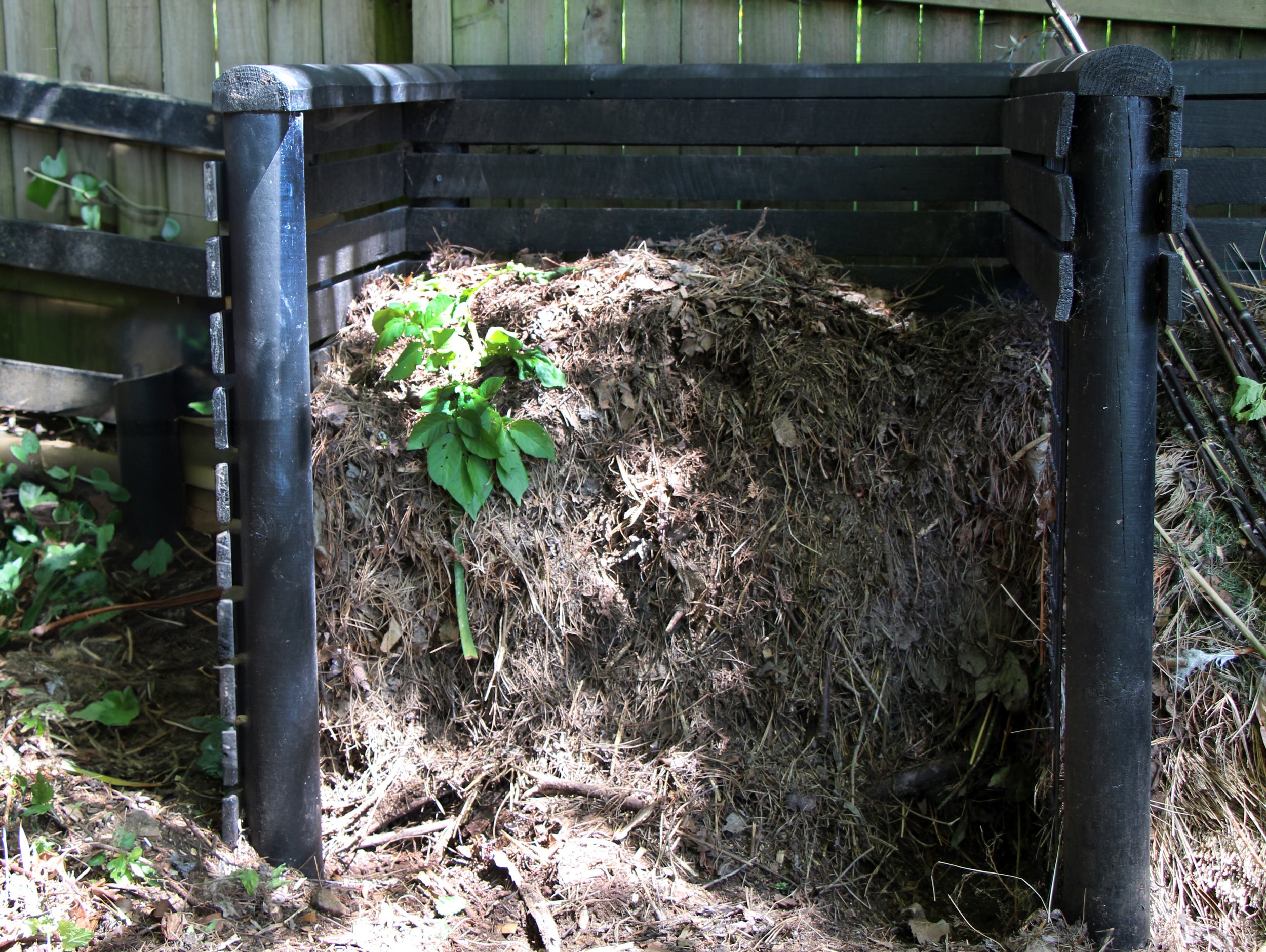Pining for Compost: Pine needles, Can I Compost them?
Every August in my slice of the Blue Mountains, we are greeted by fierce winds that sweep through at speeds exceeding 90 km/h for an entire week. During this time, our sanctuary becomes indoors, all gardening stops and when we venture into the garden, it's "hard hat season" due to the towering Radiata pine trees (Pinus radiata) that encircle our property. As I sit here, I can count a dozen of these pines looking out the window.
Though I’m a lover of large trees their constant shedding of pine needles adds a layer of messiness to the garden year round but particularly during autumn and the notorious "August winds."
When we I moved here in 2019, I initially saw an up side – the abundance of carbon-rich material for my compost! However, 6 months into a fresh compost pile reality hit me: or in fact nothing hit me… nothing was happening at all. The pine needles aren’t break down as easily as I had hoped.
If they are taking so long to break down, What can I do with them… use them as mulch? Well maybe although they do give the garden a distinct scruffy look which in some part of my garden is fine but others not so much. When needles are used as mulch over time they will leave you with hydrophobic top soil, this means the soil won’t absorb water. Not greater for a keen gardener
So, can you really compost pine needles? The answer is a resounding "YES!" But there are some facts to consider. Here's what I've learned over the past four years of gardening and composting with pine needles.
The Acidity Conundrum
Many gardeners shy away from using pine needles in their compost due to their acidity. When a needle falls from a pine tree, its pH hovers between 3.0 and 4.0 – far more acidic than most plants prefer if I was to use them as mulch. However, when pine needles fully compost, their pH levels rise, rendering them safe for application to most garden beds.
The journey to this safe state, however, is not a swift one. Pine needles have a unique resistance to decomposition. Their acidic nature discourages soil and compost microbes, while their waxy coating presents a challenge for bacteria and fungi attempting to break them down. In my garden, a compost filled with pine needles takes two to three times longer to fully break down compared to a regular compost heap. I live in a cooler climate making the composting process slow to begin with, so time is a luxury I can't afford.
The Pine Needle Experiment
Now, what does one do with an abundance of pine needles that seem unsuitable for my regular compost? After a couple of years of tossing countless barrow fulls of needles into our green waste bin, I've embarked on a pine needle composting experiment.
I've set aside a designated area – (let’s not stretch the term “compost heap" too far) – where I've been accumulating these needles. To aid their breakdown, I employ my lawnmower to crush and shred them into smaller fragments. Equal parts of fresh grass clippings joins the mix to balance carbon and nitrogen levels as well as a few shovel fulls of home made compost to inoculate the pile with good compost microbes. This pile is a testament to experimentation, a place where fallen needles find a purpose. In a few short years, the culmination of this effort will be returned to the soil as enriching compost over time feeding out ornamental garden beds.
Harnessing Pine Needles in Hot Composting
Another strategy I've adopted is incorporating limited amounts of pine needles into my hot compost. I adhere to a rule – no more than 5% of my hot compost pile should consist of pine needles. Unlike other carbon sources that compact during decomposition, pine needles maintain their structure, creating air pockets. These air spaces facilitate the perfect aerobic environment for decomposition within my hot compost setup. This mean by placing an insignificant amount of needles in my heap I can actually speed up the decomposition of the other brown and green materials around it.
So, here's the bottom line: Pine needles are perfectly safe to compost, but they take way too long to break down making their use impractical for the keen composter who already struggles to make enough of the ‘black gold!’ But if you do have a large consistent supply of pine needles, why not establish a special compost dedicated solely to them.
Do you have any ideas on dealing with an abundance of pine needles? Lets hear it!



